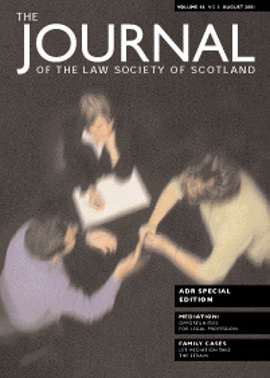Book reviews
The last year or so has brought a series of new handbooks on damages, with Bennett’s Personal Injury Damages in Scotland, Conway’s Personal Injury Practice in the Sheriff Court, and now this text written by a partnership of an academic and a sheriff. The authors declare their framework of analysis to be underpinned by their reading of Atiyah’s Accidents Compensation and the Law, the sixth edition of which, by Peter Cabe, also appeared in 1999. The categorisation of different types of damages is thus taken from Atiyah. But this is otherwise a work of rather narrower range than its English role model, and it does not make it its business to reflect on the grander philosophical issues of the best way to compensate victims of personal injury.
The book is instead divided into two parts, reflecting the specialisms of the authors. The first section explores the broad theoretical framework of the law of damages. The second examines qualification in more detail, it is slightly cumbersome: the reader checking out loss of employability, for example, must go to p30 to read about the principles underlying this head of claim, and then leaf forward to p158 for detail on quantification.
The first part thus provides a useful summary of the principles of delictual damages, but contributes little more than what is already on offer from the established textbooks. (The discussion of institutional writings on damages, for example, concludes by observing that they “provide some food for thought”, pp1-3)
The book declares its target audience to be practitioners, and indeed practitioners will possibly find the second part of the book of most immediate value. In addition to an analysis of authority on quantum, the authors also offer practical guidance on the conduct of claims, concluding with useful suggestions on the negotiations process and an appendix with style averments. The work takes into account recent case law developments up to and including the important ruling in Wells v Wells [1999] AC 345 on quantification of loss of future earnings and cost of future care, and also the landmark House of Lords decision in McFarlane v Tayside Health Board 2000 SC (HL) 1.
Those who buy this short book (xxiv + 224 pages including index) will be unlikely to use it as a substitute for the far more detailed treatment contained in works such as McEwan and Paton on Damages in Scotland, for example, but that is not its purpose. It is certainly of value as a guide to be used alongside longer texts, and also as a helpful starting point for the less experienced.
Elspeth Reid






